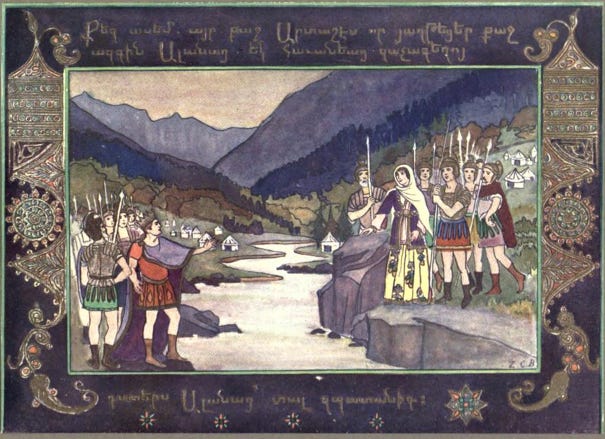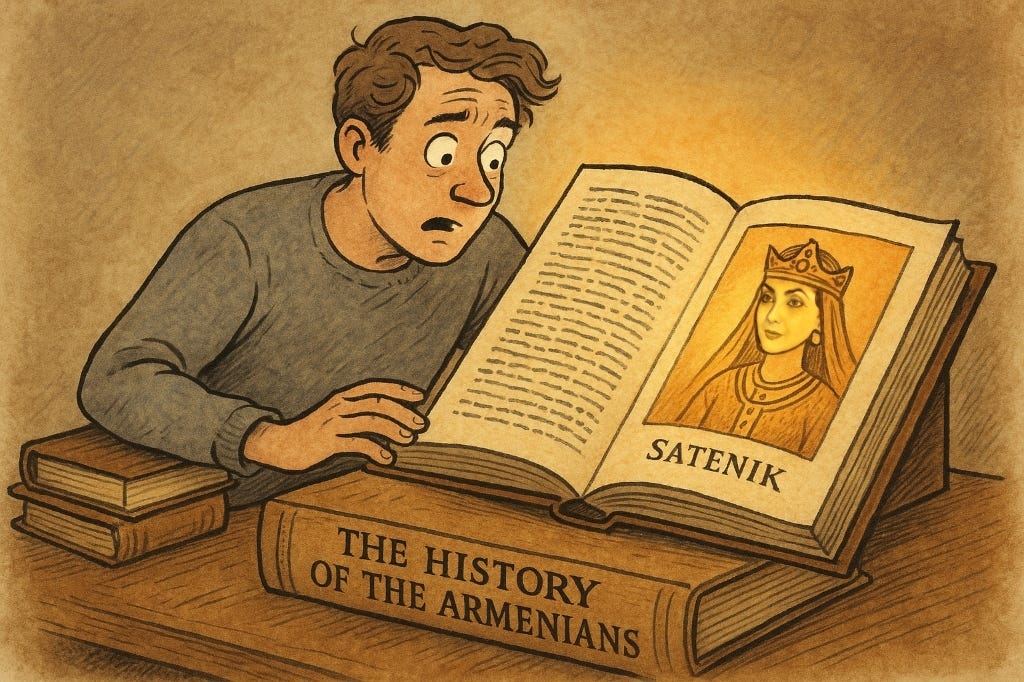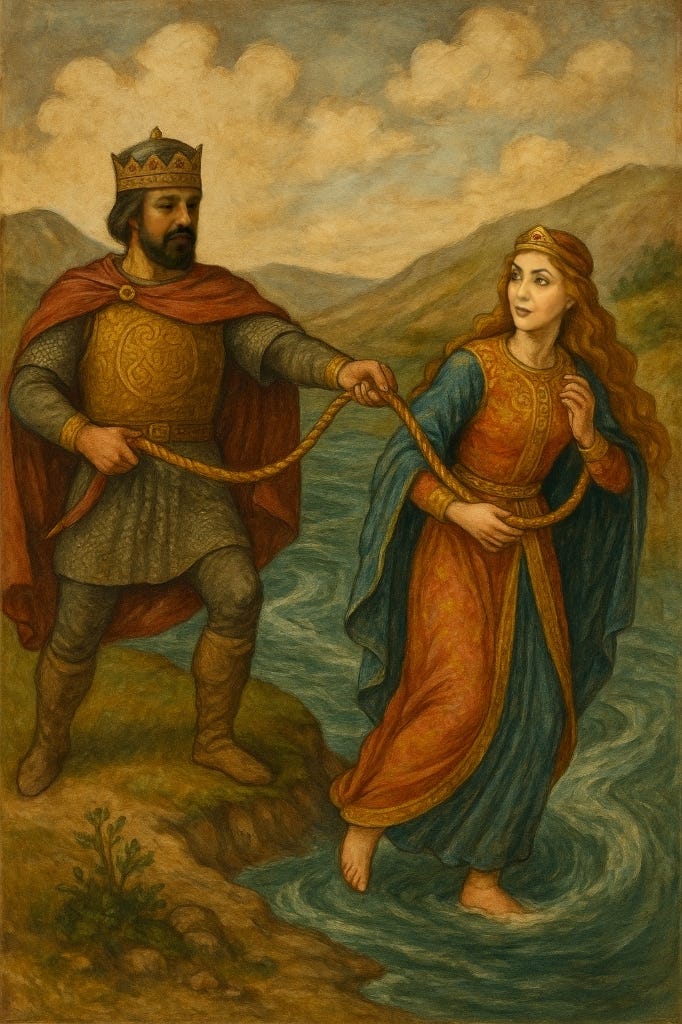After trudging my way — triumphantly, I might add — through The History of the Armenians by Movses Khorenatsi, I finally reached Book II, Chapter 50. There, tucked between accounts of royal power-plays and poetic throwaway lines, I found something strange and wonderful: the story of Queen Satenik, a woman who reminds us that even in the ancient world, love triangles could involve dragons.
But before we get ahead of ourselves, let’s set the scene properly.
Satenik was not Armenian. She was a princess of the Alans — a fierce nomadic people of the steppes north of the Caucasus. Around the second century BC, the Alans were a major power in the region, skilled horsemen and fearsome warriors, loosely related to the Scythians and Sarmatians. Over the centuries, the Alans migrated and mixed with many groups, and today, their closest descendants are the Ossetians of the Caucasus, particularly in North and South Ossetia. Through the tides of history, including the Mongol invasions and wars with Russia, the Ossetian people have preserved linguistic and cultural traces of their Alanian ancestry.
Back to our story: after an intense war between Armenia and the Alans, King Artashes (also known as Artaxias I, founder of the Artaxiad dynasty) captured the Alanian king’s son. In response, Satenik came to the Armenian camp to plead for her brother’s release. She must have been a sight: not just royal, but dazzling, the kind of beauty that could stop an army mid-battle.
And it worked — sort of. Artashes, rather than politely negotiating like a proper gentleman, took one look at her, decided diplomacy was for suckers, and abducted her. Using a golden-laced red leather cord (the ancient version of “put a ring on it”), he lassoed her waist and swept her across the river to his side. This was, apparently, considered a perfectly honorable marriage proposal at the time. They were wed amid showers of gold and pearls, and Satenik became Queen of Armenia.

But Khorenatsi’s account hints that things weren’t all golden bliss. Because years later, Satenik — noble queen, wife of the mighty Artashes — fell in love with a man named Argavan, described tantalizingly as a descendant of the vishaps, the dragon-like beings of Armenian myth.
And here’s where things get interesting.
The vishaps weren’t cartoon dragons. They were primordial forces tied to water, mountains, fertility, and storms — chaotic, wild, and deeply revered in Armenia’s pre-Christian pagan traditions. When Khorenatsi calls Argavan a descendant of the vishaps, he isn’t just saying Satenik fell for some scaly bad boy; he’s hinting that she was drawn to something older and deeper than mere politics — the ancient, untamable spirit of the earth itself.
This was no ordinary affair. It was myth colliding with monarchy, nature clashing with civilization. Satenik, born of the nomadic, sky-chasing Alans, might have felt the pull of those ancient forces far more keenly than her husband, the empire-builder Artashes.
Sadly, Khorenatsi tells us that the full ballad of Satenik and Argavan — once sung by traveling minstrels — has been lost to time. Which, frankly, is just rude. Luckily, historical irresponsibility has never stopped me before.
So here’s how I imagine it ended:
A Fan-Fictional Ending: Satenik and Argavan’s Last Stand
One moonless night, after countless secret meetings near the misty rivers, Satenik and Argavan decided to flee — not merely to a village or a neighboring kingdom, but into the heart of the mountains, where the old gods still whispered in the rocks.
They rode hard for Lake Sevan, where Argavan promised the vishaps would hide them. But Artashes, ever the king, would not lose his queen — or his pride — so easily. He sent a thousand riders to chase them down.
As the lovers reached the lake's edge, the waters began to boil. Argavan called upon his ancient blood, summoning the vishaps from the depths. For a moment, it seemed they would escape — the storm rose, the ground quaked. But the new gods were stronger now, and Artashes’ army struck with steel and fire.
Rather than be captured, Satenik and Argavan plunged into the lake together. Some say they were swallowed by the waters. Others claim they transformed into vishaps themselves, slumbering beneath Sevan’s waves, waiting for a time when the old powers might rise again.
Even today, when fishermen whisper of strange shapes beneath the surface, they say it’s the Queen and her dragon-lover, still entwined, still wild, still defying kings and kingdoms.
In the end, Satenik’s story is more than a tragic romance. It’s a symbol of Armenia’s forgotten past: a world of steppe riders, storm gods, dragon-people, and queens who, for one brief, glittering moment, tried to love the old world even as a new one closed around them.
And frankly, between gold-showers and dragon-storms, she had a far more exciting love life than most of us ever will.









